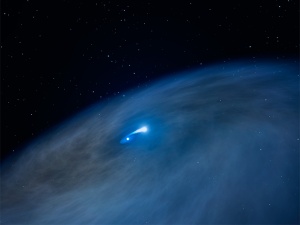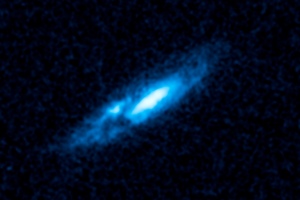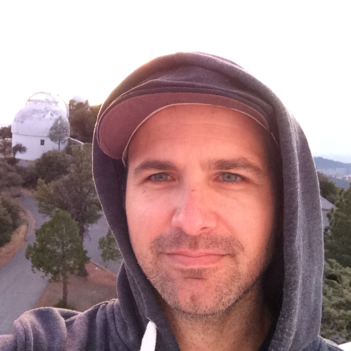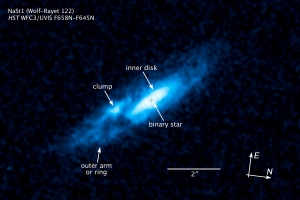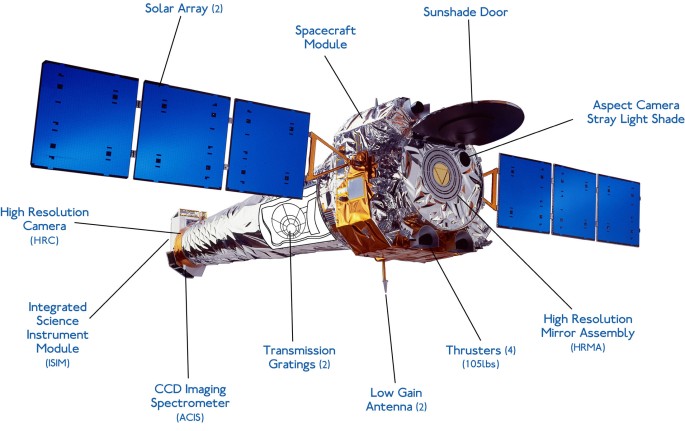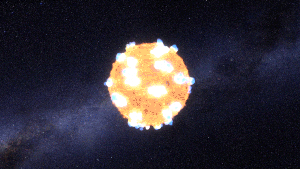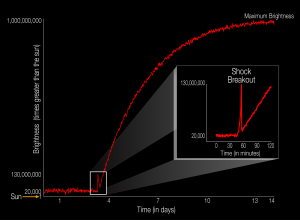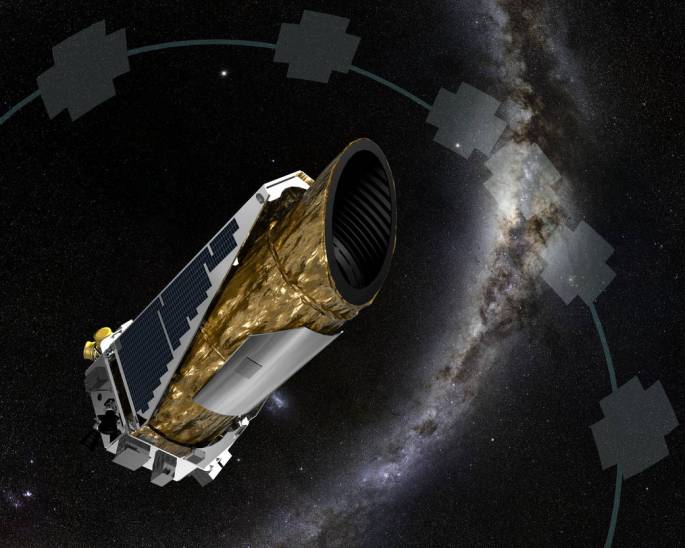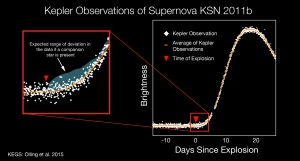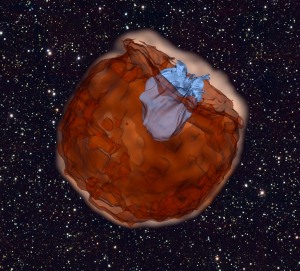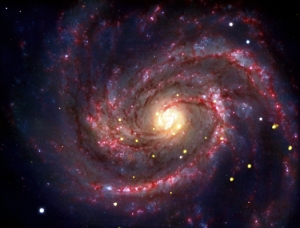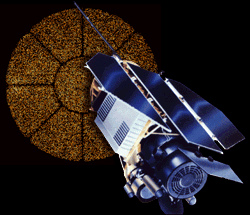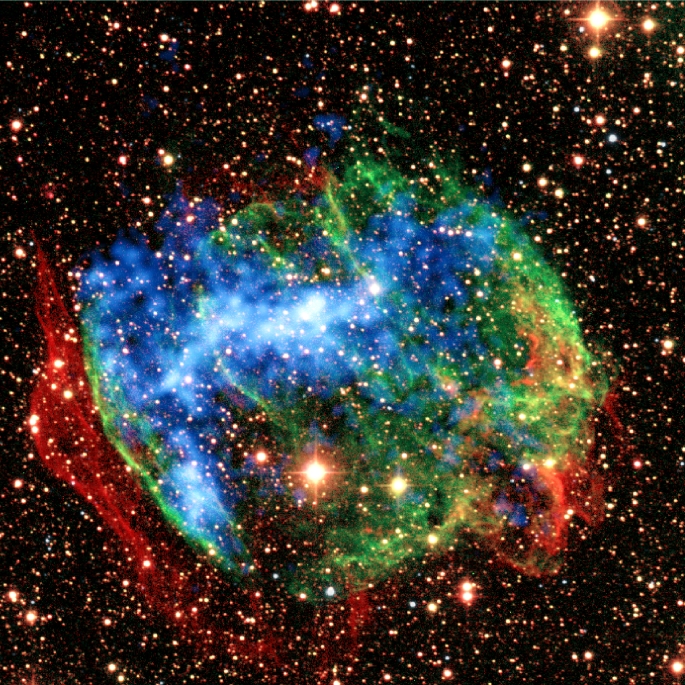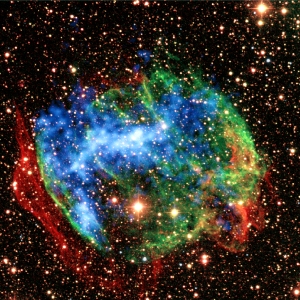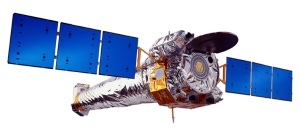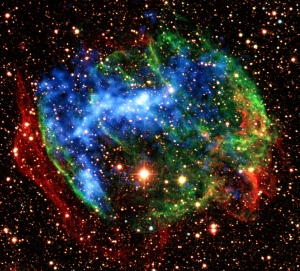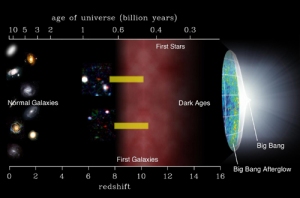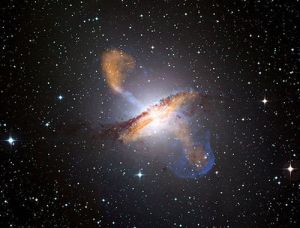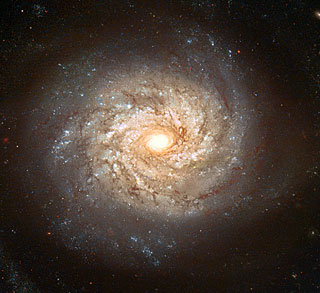
Hypernova SN 2006gy was over a hundred times brighter than a typical supernova
Space news (astrophysics: hypernovae; one of the brightest ever, SN 2006gy) – 240 million light-years toward the constellation Perseus in galaxy NGC 1260 –
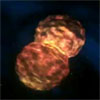
It all started in September of 2006 when a fourth-year University of Texas graduate student astronomer working for the Palomar Transient Factory’s (PTF) luminous supernova program Robert Quimby discovered the brightest celestial event up to this date. An exploding star over 100 times brighter than a normal supernova and shining brighter than the core of its host galaxy NGC 1260.
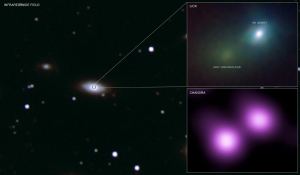
“This was a truly monstrous explosion, a hundred times more energetic than a typical supernova,” said Nathan Smith of the University of California at Berkeley, who led a team of astronomers from California and the University of Texas at Austin. “That means the star that exploded might have been as massive as a star can get, about 150 times that of our sun. We’ve never seen that before.”

Teams of astronomers working with the Katzman Automatic Imaging Telescope at the Lick Observatory on Mt. Hamilton in California and M.W. Keck Observatory near the summit of Mauna Kea on the island of Hawaii immediately began observing the event designated supernova SN 2006gy. Analysis of data showed it occurred over 240 million light-years away in galaxy NGC 1260 and took 70 days to reach maximum brightness. Staying brighter than any previously recorded event for over three months, SN 2006gy was still as bright as a normal supernova eight months later.
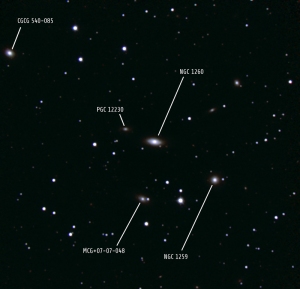
“Of all exploding stars ever observed, this was the king,” said Alex Filippenko, leader of the ground-based observations at the Lick Observatory at Mt. Hamilton, Calif., and the Keck Observatory in Mauna Kea, Hawaii. “We were astonished to see how bright it got, and how long it lasted.”

Astronomers were reasonably sure at this point the progenitor of supernova SN 2006gy was one of the largest, most massive types of stars ever to exist. But they needed to rule out the most likely alternative explanation for the event. The possibility a white dwarf star with a mass slightly higher than Sol went supernova in a dense, hydrogen-rich environment.
Another team of astronomers using the Chandra X-ray Observatory went to work at this point to rule this possibility out of their equations. If this was the case, they knew X-ray emission from the event should be at least 1,000 times more luminous than the readings they were getting.
“This provides strong evidence that SN 2006gy was, in fact, the death of an extremely massive star,” said Dave Pooley of the University of California at Berkeley, who led the Chandra observations.
The progenitor star for SN 2006gy is thought to have ejected a large volume of mass before the hypernova event occurred. This is similar to events observed by astronomers in the case of Eta Carinae, a nearby supermassive star they’re watching closely for signs of an impending supernova. Only 7,500 light-years toward the constellation Carina, compared to 240 million for galaxy NGC 1260, this star going supernova would be the celestial event of the century on Earth. It would be bright enough to see in the daylight sky.
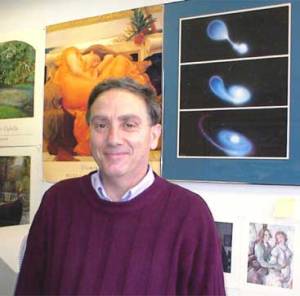
“We don’t know for sure if Eta Carinae will explode soon, but we had better keep a close eye on it just in case,” said Mario Livio of the Space Telescope Science Institute in Baltimore, who was not involved in the research. “Eta Carinae’s explosion could be the best star-show in the history of modern civilization.”

A huge, billowing pair of gas and dust clouds are captured in this stunning Hubble Space Telescope image of the supermassive star Eta Carinae.
Credit:
Jon Morse (University of Colorado), and NASA/ESA
So many questions
Astronomers think in the case of hypernova SN 2006gy things might have taken a slightly different pathway than previously recorded supernovae. Some scientists think the massive star that exploded could be much more like the supermassive stars that existed during the early moments of the cosmos. Supermassive stars that exploded in supernovae and spread the elements of creation across the cosmos, rather than collapsing to a black hole as theorized.
“In terms of the effect on the early universe, there’s a huge difference between these two possibilities,” said Smith. “One [sprinkles] the galaxy with large quantities of newly made elements and the other locks them up forever in a black hole.”
Why would these supermassive stars be different than other huge stars observed in the Milky Way? The human search for answers to these and other mysterious questions before us continues as we journey backward to the beginning of space and time.
We’ll update you with any additional data astronomers come across as the journey continues. Until next time, keep dreaming of the possibilities.
Warren Wong
Editor and Chief
The Human Journey to the beginning of space and time.
Join and enjoy the space journey of NASA.
Discover the things the ESA is planning here.
Learn more about supernovae.
Read more about supermassive stars here.
Learn more about all of the programs of the Palomar Transient Factory.
Learn more about astronomy at the University of California at Berkeley.
Discover astronomy at the University of Texas in Austin here.
Take the space voyage of the Lick Observatory.
Discover the M.W. Keck Observatory here.
Discover the things X-ray emissions are telling us aboard the Chandra X-ray Observatory.
Read more about a star astronomers nicknamed Nasty 1.
Learn more about Kepler’s recent observation of the shockwave of a supernova in visible light.
Read about the next generation Eye-in-the-sky the Large Synoptic Survey Telescope (LSST).



